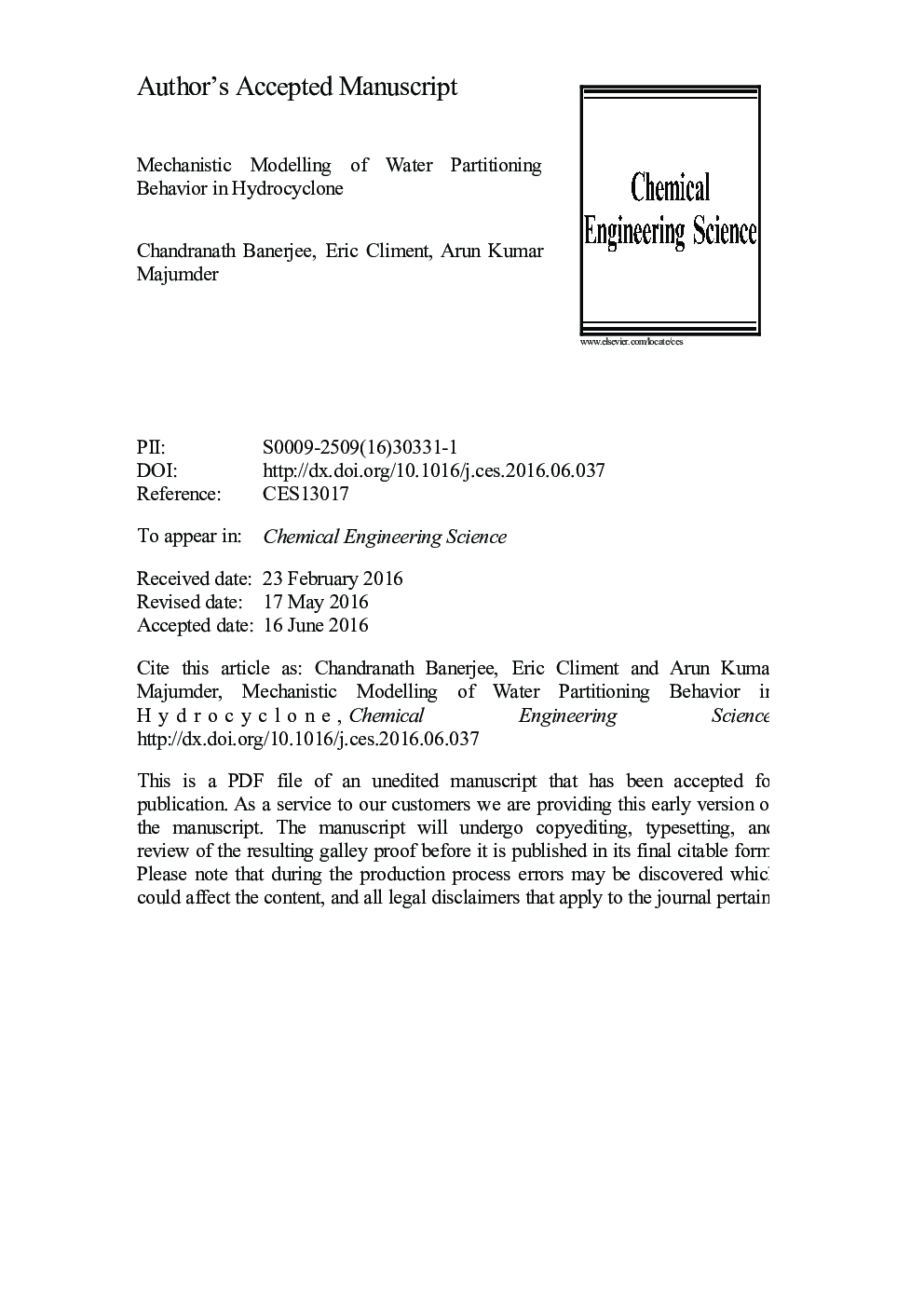| Article ID | Journal | Published Year | Pages | File Type |
|---|---|---|---|---|
| 6589047 | Chemical Engineering Science | 2016 | 26 Pages |
Abstract
A new mechanistic model on water split behaviour in a hydrocyclone has been developed based on the convoluted hydrodynamics of swirling flows in a confined environment. A comprehensive study has been accomplished on the genesis and subsequent distribution of G force based on the characterization of internal flow features of a 2Â in hydrocyclone through computational fluid dynamics (CFD) approach. The difference between the magnitude of G force in cylindrical and spigot regions is taken into account as a new hydrodynamic parameter to compute the water split behaviour. Specifically, our analysis reveals a semi-empirical relationship between the water split with G force difference (ÎG), the vortex finder diameter (Dvf) and the spigot diameter (Dsp). The developed model is validated against experimental data and show good prediction accuracy. Unique aspect of the developed empirical model is that the underlying mechanism of incipient flow peculiarity is implicitly accounted to rummage the separation characteristics in a quantifiable manner. In addition to rationalize the flow split behaviour of hydrocyclones, this new hydrodynamic indicator seems promising to be used as a scale-up parameter in envisaging the separation performance for a given application.
Keywords
Related Topics
Physical Sciences and Engineering
Chemical Engineering
Chemical Engineering (General)
Authors
Chandranath Banerjee, Eric Climent, Arun Kumar Majumder,
